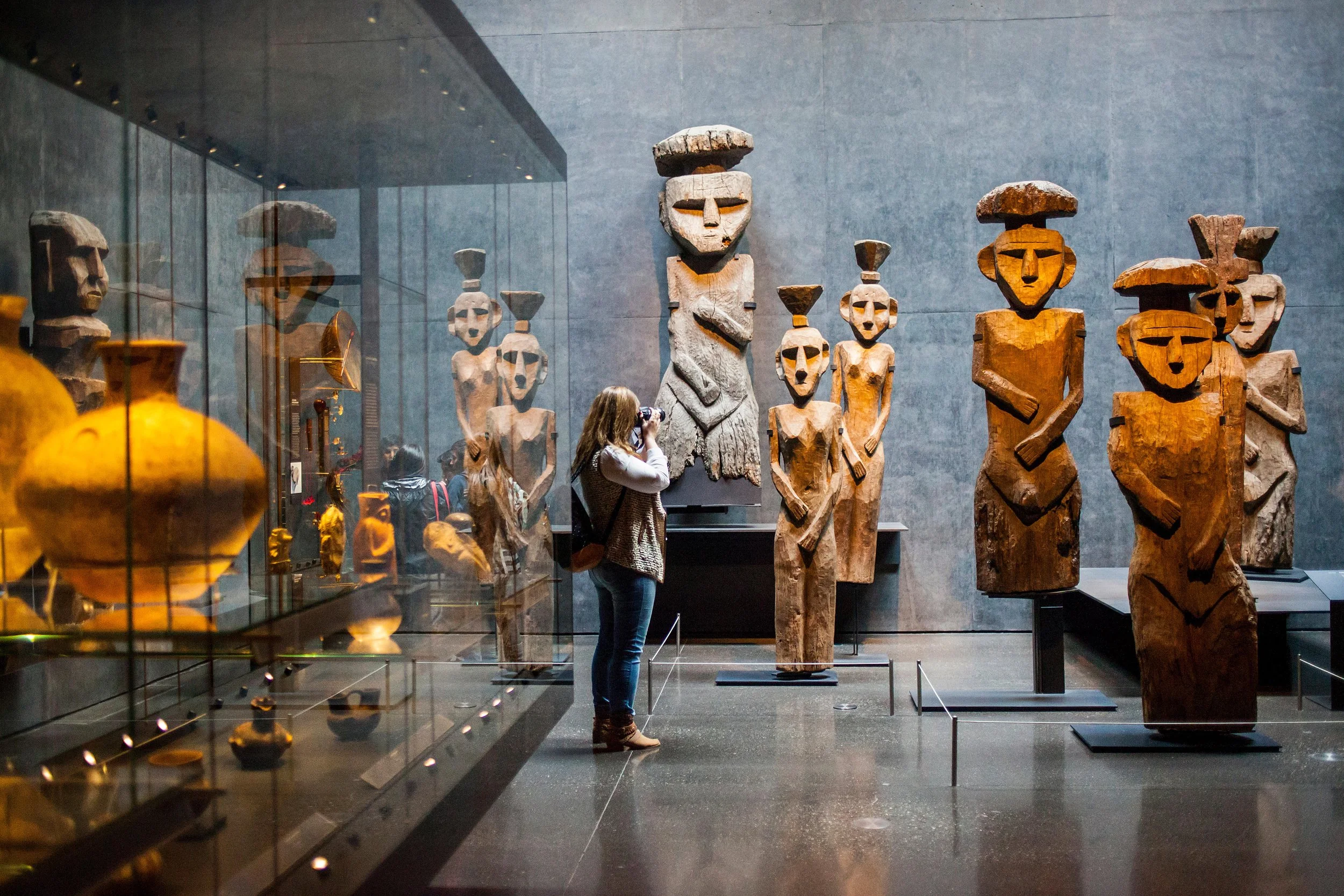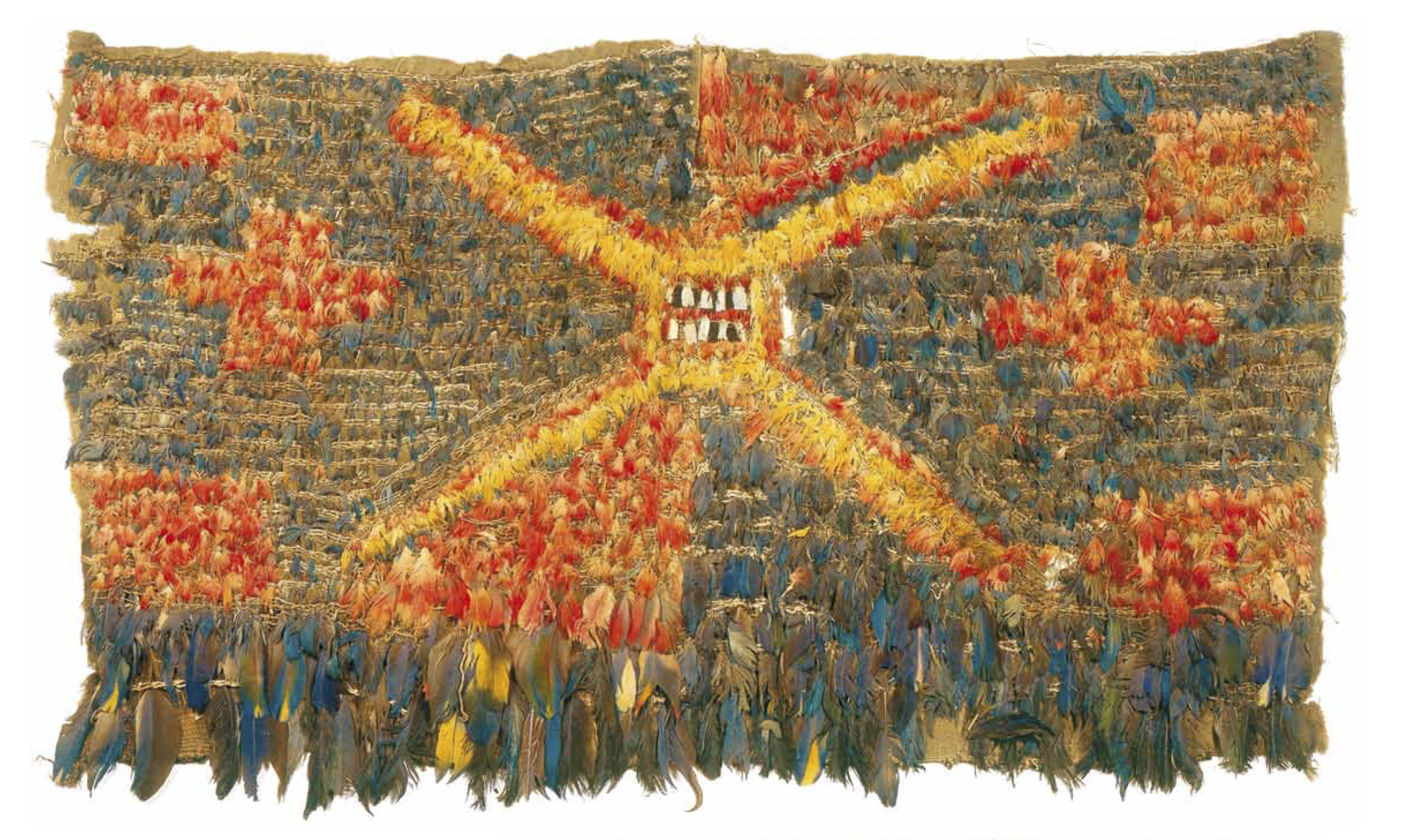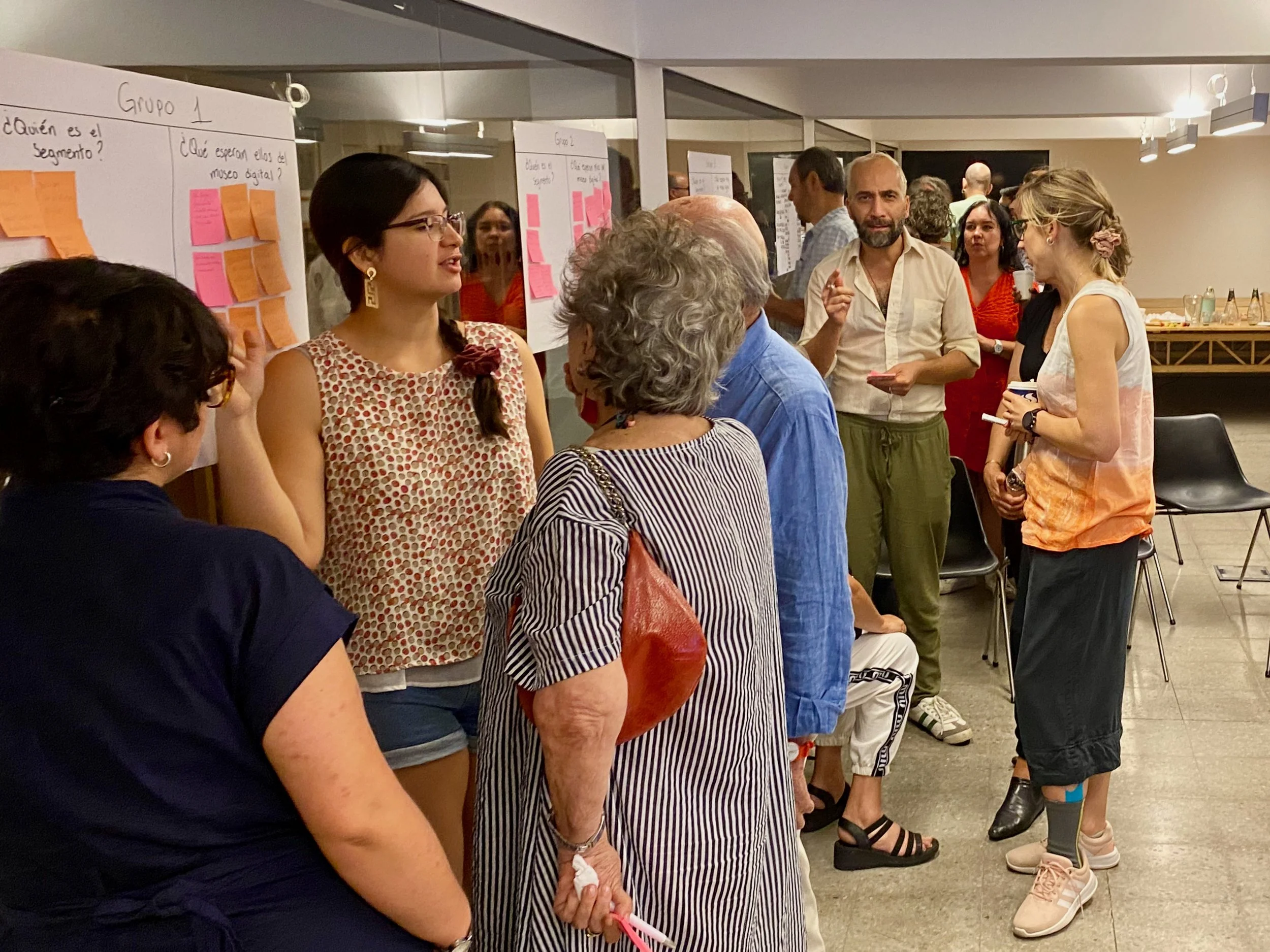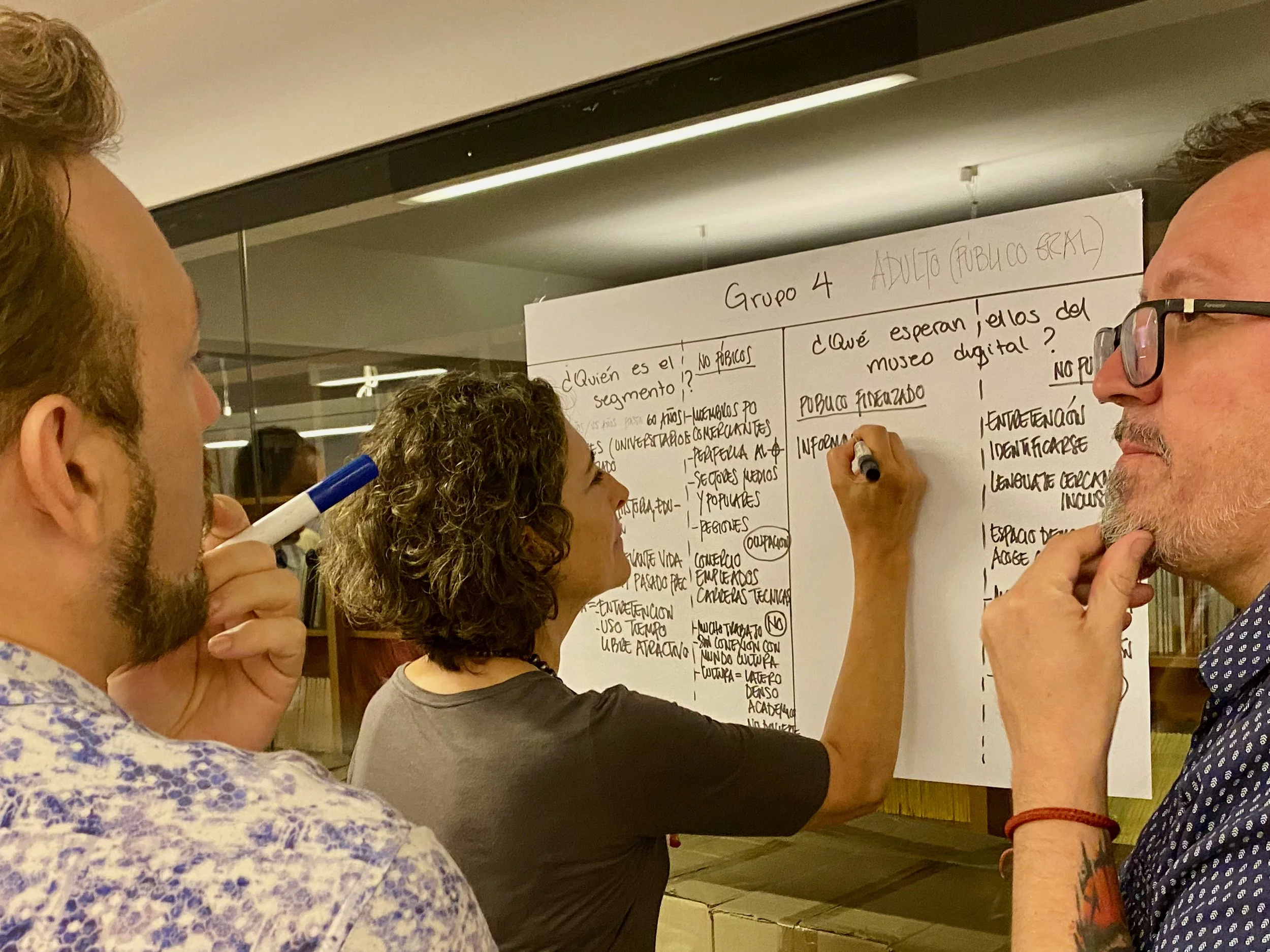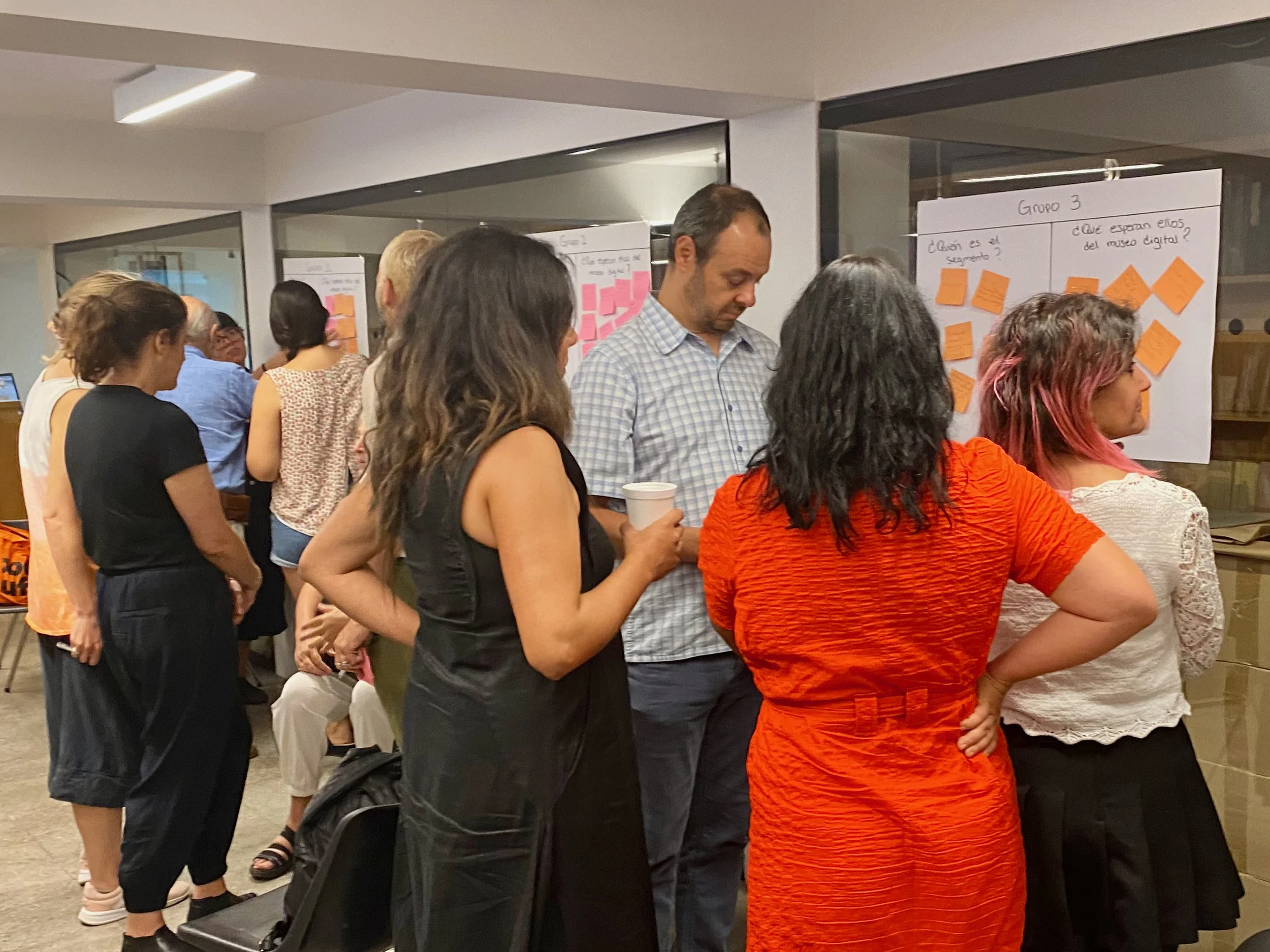A digital strategy for the world’s leading museum of pre-Columbian art
Museo Chileno de Arte Precolombino
The ‘Chile before Chile’ galleries at Museo Chileno de Arte Precolombino.
Museo Chileno de Arte Precolombino in Santiago, Chile tells the stories of a wide range of pre-Columbian peoples through its remarkable collection of art and artefacts.
Whilst it is highly regarded for its galleries, exhibitions and its support of scholarship regarding indigenous heritage, the museum’s use of digital technology had been limited.
Working with a local technical partner, we led the development of a comprehensive strategy and roadmap for digital transformation.
An extensive consultation process involved audiences, staff, trustees, representatives from government, donors, peer organisations, and leading digital practitioners from all over the world.
Workshops with the museum team explored international best practice from digitisation and presentation of museum collections, immersive and other in-gallery experiences, online courses, to uses of artificial intelligence, social media, trends in museum websites. Special focus was placed on innovative uses of digital technology to promote learning and engage people who may not be able to visit the museum in person.
In parallel, our technical partner Magnet took a deep dive into the museum’s tech stack, systems and data, and the opportunities for improvement.
A small selection of artefacts from the collection of Museo Chileno de Arte Precolombino.
The resulting digital vision and strategy was geared around three core objectives – creating the world's greatest online collection of pre-Columbian art; expanding the museum's reach, engagement and participation; and transforming learning about pre-Columbian cultures.
A series of concepts was proposed to advance each objective, accompanied by a set of principles for the museum's digital future – including placing users at the heart of its thinking; adopting an agile 'test and learn' approach; becoming more two-way and permeable, and embedding an open access approach to research.
Museum staff take part in a project workshop.
A core component of the strategy was a high-level brief for a new museum website including site architecture, functionality, look and feel, and tone of voice.
We recommended an approach to digital content which treated the collection as a springboard for a wide range of stories and reflections about what it means to be human, enhancing the museum’s contemporary relevance and making it a place to foster greater understanding of the present and future, as well as the past.
An accompanying roadmap set out the recommended investments in technical infrastructure to bring the digital vision and strategy to life over the coming years.
Recommendations included using AI to democratise the knowledge held in the museum’s academic journal.
A core component of the strategy was a high-level brief for a new museum website. (Design concept by Magnet)
‘Quick wins’ included recommendations for enhancing the museum’s use of social media.
Alongside the core digital vision, strategy and roadmap, the project afforded a number of important ‘quick wins’ around cyber security; ticketing; social media; data usage; digitisation and collections management.
The museum subsequently appointed its first Head of Digital to lead the transformation process internally, and received its first grant from Bloomberg Philanthropies.
Services provided:
– Staff and stakeholder consultation
– User and audience research
– Extensive survey of international best practice
– Workshop facilitation (bilingual, Spanish & English)
– Digital strategy development & articulation
– Website design concepts, architecture & supporting technologies, data & operational systems roadmap (working with Magnet)
“Will's digital expertise and his wide-ranging knowledge of international best practice inspired everyone at our museum. Whilst we are just beginning our digital transformation, we now have a roadmap and a compelling vision for how digital can enable many more people to learn about pre-Columbian art and cultures.”
Cecilia Puga, Director, Museo Chileno de Arte Precolombino

